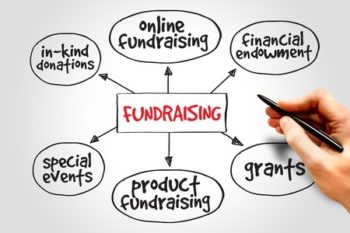Online Fundraising: Effective Digital Campaigns for Nonprofit Success
Wiki Article
The Function of Neighborhood Interaction in Nonprofit Fundraising: Building Lasting Relationships for Lasting Support
Community interaction is increasingly acknowledged as an important component of effective not-for-profit fundraising. The techniques and techniques used to involve areas vary commonly, increasing vital inquiries about efficiency and effect.Recognizing Area Involvement
Area engagement is an important element of effective nonprofit fundraising initiatives. It refers to the methods and activities that companies use to get in touch with their local communities, fostering relationships that are mutually valuable. Recognizing area involvement entails identifying its complex nature, which includes outreach, involvement, and partnership. Nonprofits must recognize crucial stakeholders-- such as neighborhood members, neighborhood organizations, and various other organizations-- to create reliable interaction techniques.Efficient community interaction is predicated on energetic listening and responsiveness to the requirements and interests of the area. This process entails soliciting responses, comprehending area dynamics, and making sure that the company's goal aligns with neighborhood concerns. Involving the community can take different forms, consisting of public conferences, volunteer chances, and collaboration initiatives, each made to encourage participation and financial investment in the organization's objectives.
Furthermore, neighborhood involvement should be come close to as a recurring dialogue as opposed to a single initiative. By fostering a comprehensive setting where community voices are heard and valued, nonprofits can construct a solid foundation for future fundraising ventures. Inevitably, a deep understanding of area involvement equips companies to develop genuine connections that enhance their general performance and sustainability.
Advantages of Strong Relationships
Strong connections developed via area engagement yield various advantages for not-for-profit fundraising initiatives. Firstly, these relationships foster count on and credibility, important elements in motivating benefactors to contribute. When possible supporters see a nonprofit proactively involved in their neighborhood, they are most likely to rely on its goal and influence.
Moreover, these partnerships assist in effective interaction. Nonprofits can leverage their links to share tales of impact, updates, and requires, ensuring that advocates remain educated and involved. This open line of communication not only reinforces bonds but additionally encourages word-of-mouth promo, expanding the not-for-profit's reach.
Last but not least, strong area ties can attract brand-new companions and enrollers. Businesses and people are much more likely to straighten with organizations that demonstrate meaningful neighborhood participation, providing added resources and support that can dramatically boost fundraising capabilities. Therefore, cultivating robust partnerships through area involvement is important to a nonprofit's long-lasting fundraising success.
Approaches for Reliable Engagement
How can nonprofits effectively involve their areas to boost fundraising initiatives? Establishing targeted methods is crucial for cultivating purposeful links. Initially, leveraging social networks platforms allows organizations to share their goal dynamically and interactively, getting to a more comprehensive target market. Routine updates, engaging web content, and calls-to-action can galvanize area passion and engagement.Second, holding area events, such as workshops, volunteer possibilities, or fundraising drives, assists in in person communication, allowing nonprofits to display their effect and efforts. These events not only increase funds however likewise cultivate relationships and permit area members to involve directly with the reason.
Third, read here implementing personalized interaction approaches can enhance involvement. Tailoring messages to details benefactor segments based upon rate of interests and past contributions cultivates a sense of belonging and financial investment in the company's objective.
Finally, creating partnerships with local organizations and neighborhood leaders can amplify outreach initiatives. Joint efforts can boost visibility and reputation, showing a collective commitment to the area's well-being. By integrating these approaches, nonprofits can build enduring connections that boost fundraising efforts and drive sustainable assistance.
Gauging Interaction Success
While involving the community is vital for successful not-for-profit fundraising, measuring the performance of these engagement initiatives is similarly essential. Establishing clear metrics enables companies to evaluate how well they are connecting with their target market and attaining their fundraising goals. Key performance signs (KPIs) such as contributor retention rates, volunteer engagement levels, and engagement on social networks systems supply substantial information for examination.
Frequently evaluating these metrics makes it possible for organizations to pivot their methods when necessary, ensuring that area interaction continues to be lined up with their general goal. In addition, sharing these results with stakeholders promotes openness and develops trust fund, urging additional neighborhood involvement. Inevitably, a durable measurement structure not only informs future fundraising initiatives yet additionally strengthens the partnership between the not-for-profit and its advocates, laying the groundwork for lasting success.
Study in Community Impact
Many case research studies illustrate the profound influence that neighborhood interaction can have on not-for-profit fundraising success. One significant example is the "Food for Idea" campaign, where a local food bank partnered with businesses and institutions to host neighborhood suppers. These occasions not only raised funds however likewise fostered a sense of belonging amongst individuals, considerably boosting contributor retention prices.An additional compelling situation is the "Eco-friendly Spaces Job," which entailed neighborhood residents in the revitalization of urban parks. This initiative not only gathered economic support from neighborhood businesses but also cultivated a volunteer base that contributed to recurring upkeep and shows. The feeling of possession and satisfaction amongst area participants converted right helpful site into continual payments.
In the realm of arts, the "Art for All" campaign effectively engaged regional artists and patrons to create collaborative art installments, see it here resulting in increased presence and contributions for a neighborhood arts nonprofit.
These instances highlight that when nonprofits prioritize community involvement, they can develop enduring connections that boost fundraising initiatives, making sure lasting assistance and cultivating a vivid neighborhood culture. Such situations demonstrate that area interaction is not merely a strategy however a vital pillar of nonprofit success.
Conclusion
Finally, neighborhood involvement is indispensable to the success of not-for-profit fundraising efforts. By cultivating strong partnerships with local stakeholders, companies improve depend on and reliability, leading to enhanced benefactor retention and loyalty. Applying efficient involvement techniques and determining their effect makes certain that nonprofits can adjust and grow. Inevitably, a robust structure of neighborhood assistance not only amplifies fundraising possible but likewise cultivates a society of collaboration, crucial for achieving lasting organizational objectives and maintaining significant effect.Nonprofits should determine vital stakeholders-- such as community participants, neighborhood services, and various other organizations-- to create efficient involvement strategies.

In final thought, community involvement is important to the success of nonprofit fundraising initiatives.
Report this wiki page